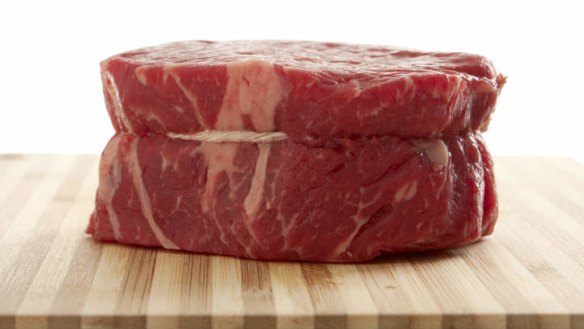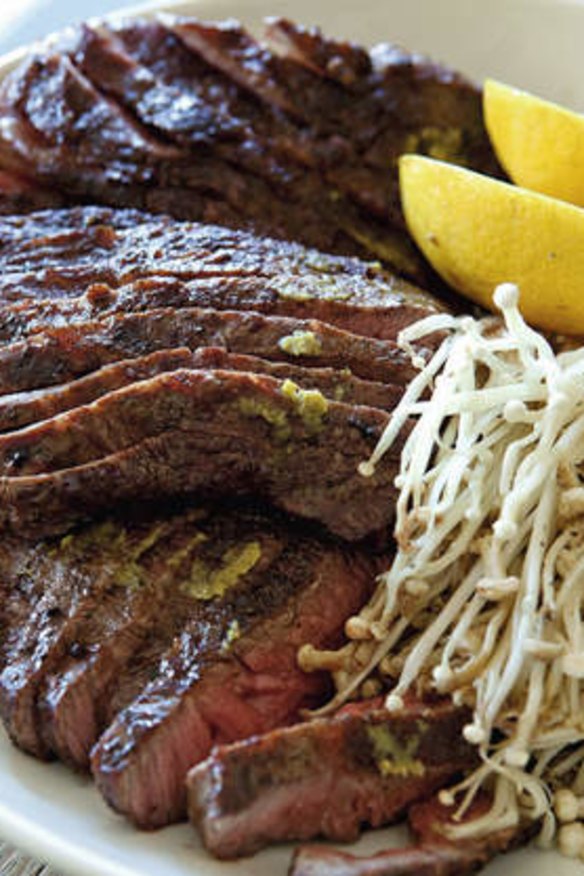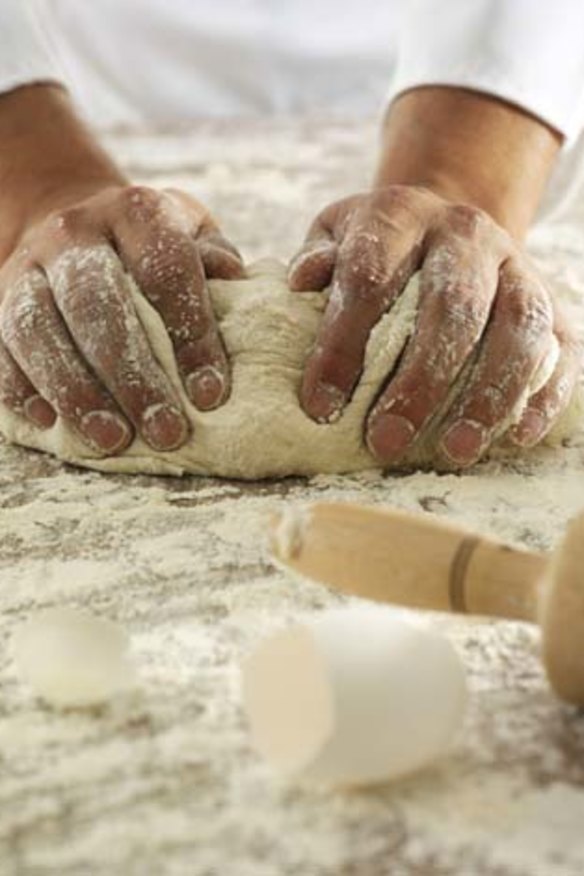Tender v flavour: what matters most in a steak?

What is the secret to perfect, tender steak? J. Nairn
Have you ever stood next to a fully grown cow? They are huge. And, if you have ever been chased by one, you will know they are fast. Or, if you have seen one crash through a fence, you will appreciate their strength and weight. To expect the muscles from such beasts to be delicate defies logic. Yet we have been conditioned to use just one single word to describe steak. Tender. To meet this unreasonable expectation for tenderness, the meat industry has done to beef what plant breeders have done to the tomato. They have taken out all the flavour. Much of our beef comes from animals raised on grain in feedlots and slaughtered when young. The hospitality industry has confirmed our expectation of tenderness by marketing eye fillet as the premium steak. But try this. Ask a real-life butcher for a dry-aged rump steak cut from the carcass of a grass-fed animal. Cook it. Rest it. Season it. Use a very sharp knife to cut your steak. A blunt knife will make you feel that any piece of meat is tough. Cut the steak into small bite-size pieces. Any large piece of steak will be hard to chew. The steak should be toothsome and, most importantly, flavoursome. Tender steak is the lollywater of the meat world. The first word real meat-eaters use in relation to steak is not ''tender'', but ''flavour''.
I bought a roast chicken and noticed there was still some pink meat. I placed said bird in my oven to cook a while longer. Was I being overzealous? K. Jasper
Cooked chook flesh can remain pink, especially close to the bone. This is because, during cooking, haemoglobin can seep from the bone and make the flesh look pink. This is particularly prevalent in young chooks and chooks that have been frozen. If you're worried about the ''doneness'' of a chook, preheat the oven to 180 degrees, cut the bird in half, place it on a tray and cook it for 15 minutes. The only real way of telling if meat has been cooked is to use a thermometer to make sure the internal temperature has reached at least 74 degrees.

I am making bread and the recipe calls for me to keep the dough in a warm place to prove. What is a ''warm place''? V. Lyons
Port Douglas is nice, especially the beach. But I find it too 1980s , don't you? Noosa is good, but too many Melburnians. Bali is great - if you stay away from Kuta. Now to bread dough. Yeast is not an additive but millions and millions of living cells that convert sugars in the flour in the dough into alcohol and carbon dioxide. They work best at a temperature range between 25 degrees and 28 degrees. Consider places such as near a stove or oven that is on, a sunny bench, on top of a fridge above the heat exchange, by a hot water system. It should feel slightly warmer than room temperature, but no more. However, yeast is still active at lower temperatures, which is why some artisan bakers leave their loaves to prove in fridges overnight. At lower temperatures, the yeast takes a lot longer to do its job, but along the way it creates different flavour compounds, making for a more flavoursome loaf. Whatever the case, one should let both fermenting dough and proving loaves roughly double in size, knowing the cooler temperatures will require longer ferments.
Where can I get papaya enzyme? L. Walker

You are referring to papain or papaya proteinase, the enzyme derived from papaya, or pawpaw. It's an enzyme that breaks down protein, which is why it is used as meat tenderiser, and, funnily enough, as a facial scrub. Industrial food manufacturers use it on spent brewer's yeast and mix what is left over with salt and flavourings to make the black yeast extract we spread on our toast in the morning. The Mesoamericans still use papaya leaves to wrap chunks of tough meat that they then cook in underground ovens. The enzyme works best at temperatures between 60 degrees and 79 degrees and becomes inactive above boiling point. You can use papayaze to tenderise meat but because it only breaks down the cells it comes in contact with, it is best used in a marinade and pierce the meat to allow the mixture to penetrate the flesh. You have to be careful using these enzymes as they can quickly turn meat to mush. Try ordering papain online at melbournefooddepot.com. If you have no luck, try marinating tough meat with juiced green papaya. Also try fresh pineapple juice, it contains a similar enzyme called bromelain.
Got a question for Richard Cornish? Leave it in the comments below. Or email questions to: brainfood@richardcornish.com.au
The best recipes from Australia's leading chefs straight to your inbox.
Sign up- More:
- Brain food
From our partners
Original URL: https://www.theage.com.au/goodfood/recipes/tender-v-flavour-what-matters-most-in-a-steak-20130603-2nkxe.html
